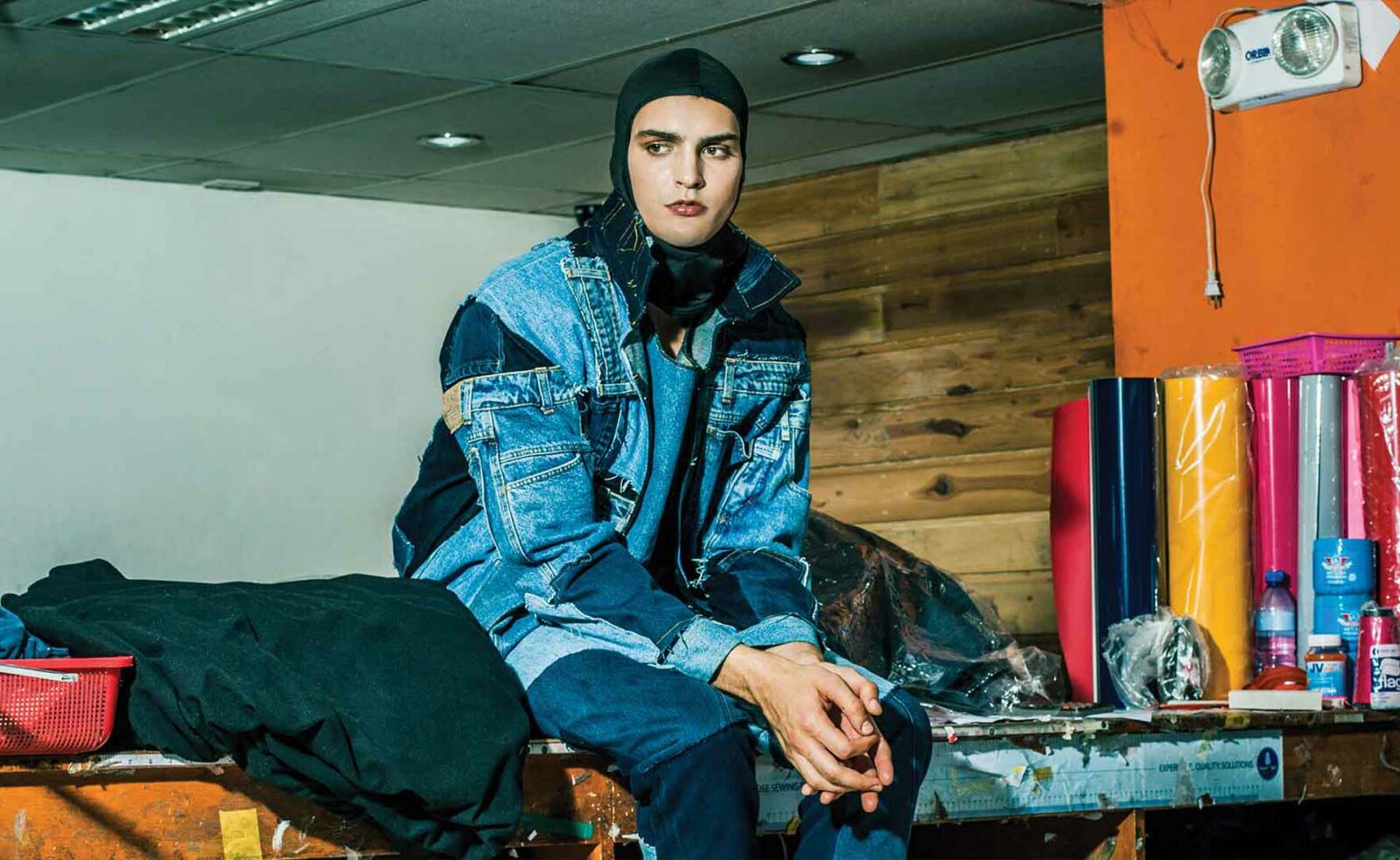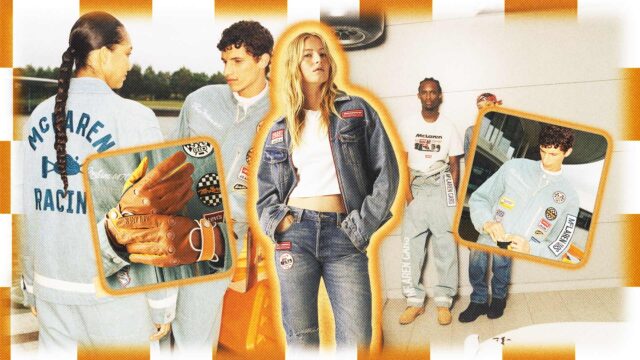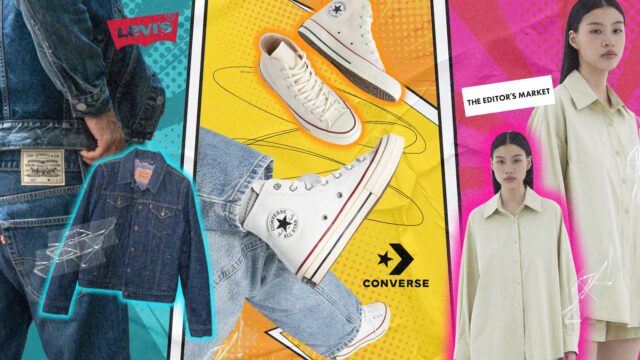It is no longer just a matter of fact, but rather a gospel truth that fashion is one of the world’s largest contributor to pollution. With the timeline and need that the industry operates yearly, it comes to no shock that our consumption has gone up since the advent of the new millennium. If we were to run on the numbers along, it is enough to choke one up faster than the reality of Australian bushfires asphyxiating the ecosystem with its fumes. With a 60% increase in the purchasing of garments in 2014 from 2000, fashion has since accounted for at least 10% of the global carbon emissions, singularly known as a key greenhouse gas that has been speeding up climate change at a worrying exponential rate. Further more, this hawking and hoarding of fashion only means a racking up of dump every year, which roughly stands at 85% that goes to waste.
If that isn’t worrying, then in the process of stylish creation, the multi-billion dollar industry consumes water to a dried up aftermath, polluting its streams with micro-fibers, plastic, and chemicals, as well as it razing rainforests to little to no mercy. Taking a heavy toll on the environment, it has proven more and more difficult to keep up, despite the most valiant efforts in saving and sustaining.
While there has been more of a shift to be more eco-ethical, sustainable, and conscious, the threats to the environment are proving to be veritably irreversible at this point. Some fashion figures have taken stricter measures to save the world, so to speak, with rigors being rewritten and re-calibrated to dial down on the offshoot of waste. With brands such as H&M, Adidas, Guess, Herbal Essences, and Lush, among others pledging tangible efforts by working towards being plastic-free, incorporating a reuse and recycle mindset, and using more natural and less damaging to the Earth materials. This movement isn’t just exclusive to the fast fashion as designers such as Stella McCartney, Vivienne Westwood, and Rag & Bone are really moving mountains to strike a stronger sense of consciousness from within their ranks. Making no compromises, Stella McCartney in particular stresses that the word ‘eco’ shouldn’t be a term “that immediately conjures up images of oatmeal-colored fashion or garments that are oversized or lacking in any sort of luxury or beauty, detailing or desirability.” With a more mindful approach to creation, the business imperative should be more tangible and social, challenging and pushing boundaries to make things happen, crafting products that is fit for the world today and in the future. “From never using leather or fur and pioneering new alternative materials to utilizing cutting edge technologies, pushing towards circularity, protecting ancient and endangered forests and measuring our impact with ground-breaking tools,” a sustainable lifestyle in equilibrium is hopefully achieved.
Yes, bigger and bolder efforts must be undertaken, especially in the face of great and grave threat as of late, but it is understood that smaller, realistic steps in one’s every day is enough to stack up to results that will affect the shift in the order of nature. Whether it be as simple as cutting down on the spending and purchasing, or adapting a more serious effort of considering eco-friendly, all-natural, and ethically created fashion, something can and has to be done—and there is no other one else to look to than yourself.
Let’s face the aggressive truth: The world we live in has not only taken a new turn, but it has ratified a new reality for us to exist in. Heeding a responsibility to actively take part in the resuscitation of our planet, we challenged menswear designers to create an original encompassing their aesthetic and point-of-view, and most importantly, it being sustainable.
RUSSELL VILLAFUERTE
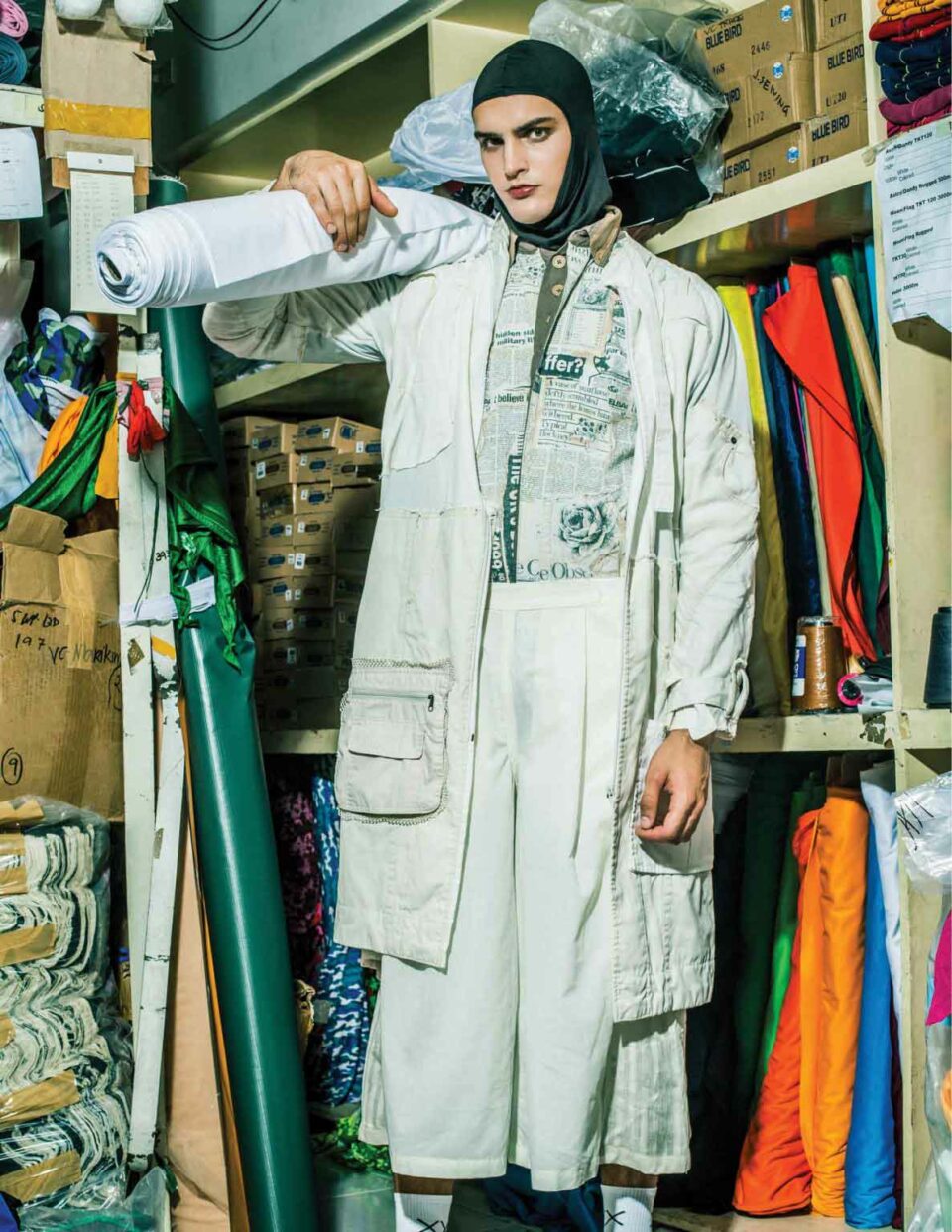
No stranger to sustainability, Russell Villafuerte has always held the lifestyle at the core of his design sensibilities. While some would look back to his finale collection in Project Runway, as he well as his debut collection for Philippine Fashion Week, his relationship with eco-consciousness traces back to his Interior Design degree, where the focus was really to design sustainably, ensuring the health of our planet.
An offshoot of his namesake brand, Strong Village is Russell Villafuerte’s more personal and sustainable approach to fashion. “It’s a brand where all the clothes I make are very personal,” he says, emphasizing his bid to do his fair share of helping the environment. For this look, he used only deadstock and used fabrics, piecing them together to become a realization of sustainablitiy, without losing that signature nonchalant, don’t-mess-with-me energy. “With this effort, I hope that awareness will eventually turn into practice. So, I hope sustainable fashion will stay for good and not just become a trend that will be forgotten a few seasons from now.”
White deconstructed trench jacket, deconstructed low-crotch onesie, and white deconstructed canvas shorts all by STRONG VILLAGE
MARK TAMAYO
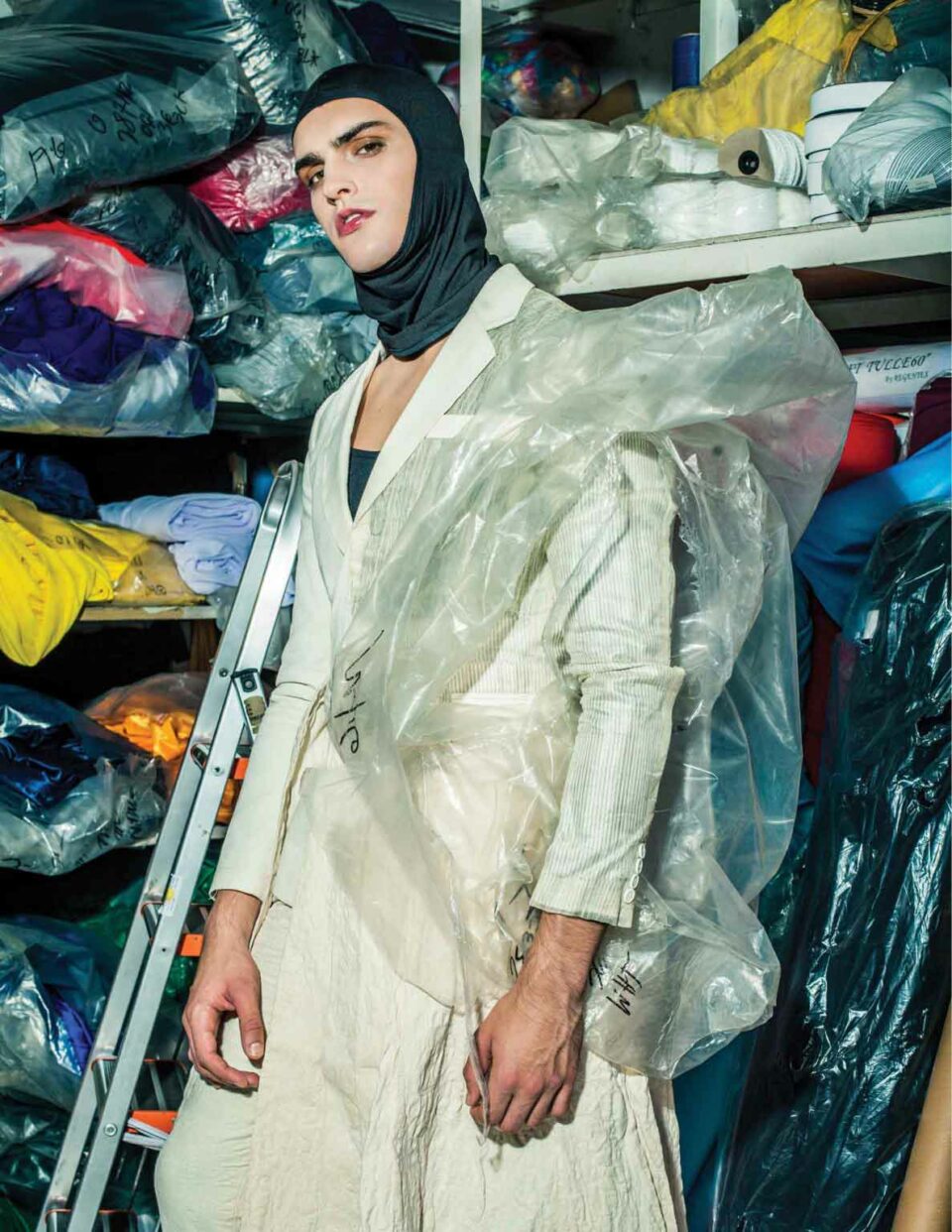
“Sustainability in the fashion industry is rather challenging, particularly for young designers like me,” admits Mark Tamayo. “Usually, cost constraints and sourcing issues would limit our ability to use sustainable fabrics. Nevertheless, I try to use sustainable materials whenever possible by using locally made fabric dyed using organic dyes.” In this undertaking, he crafted a tailored piece that marries precision and whimsy rendered in katsa (muslin cloth) and Piña.
Beyond the actual garment, Mark Tamayo also believes in ethical practices for his pool of artisans and employees. “I believe that sustainability and ethical considerations in fashion must be observed as far as it is practical, including the fair labor treatment and payment of proper wages to our workers and employees.”
Muslin and Piña blazer, cream trousers, and pleated apron all by Mark Tamayo, and black sneakers by SKECHERS
SANTI OBCENA
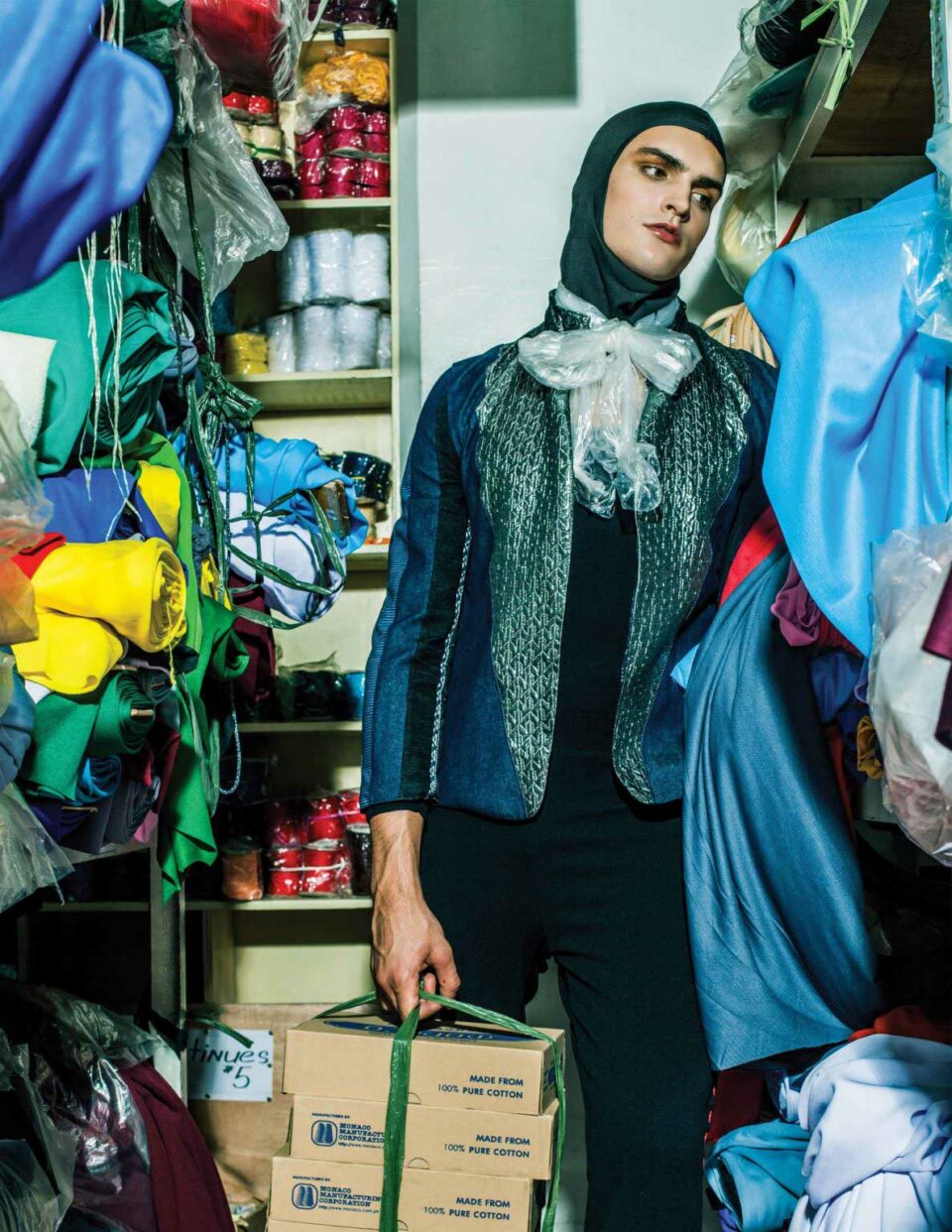
“Fashion is one of the primary producers of waste in the world, as designers it is our duty to find ways to minimize wastage in our own little studios by reducing the excess we put out in the world,” says Santi Obcena, before detailing his work, aptly entitled, Tagpi (lit. patch). “It is in the little things, like laying out fabrics smarter or repurposing the pieces. It doesn’t have to be a big gesture. In the conscious efforts of not throwing out every fabric, or developing designs that cater to the scraps we have in the studio.” A jacket made entirely out of scrap fabrics from 8 previous projects, this is quite literally a sewn up narrative of different stories coming together as one impressive narrative.
Inspired primarily by wise words of How To Make An American Quilt, which elucidates: “Young lovers seek perfection. Old lovers learn the art of sewing shreds together. And of seeing beauty in a multiplicity of patches.” Therein lies a conversation of Santi Obcena that hop is sewn between the strips of fabric and threaded through the seams that encloses it.
Denim, printed twill, nylon, and woven metallic fabric-patched jacket by SANTI OBCENA
EMIR YAMAMOTO
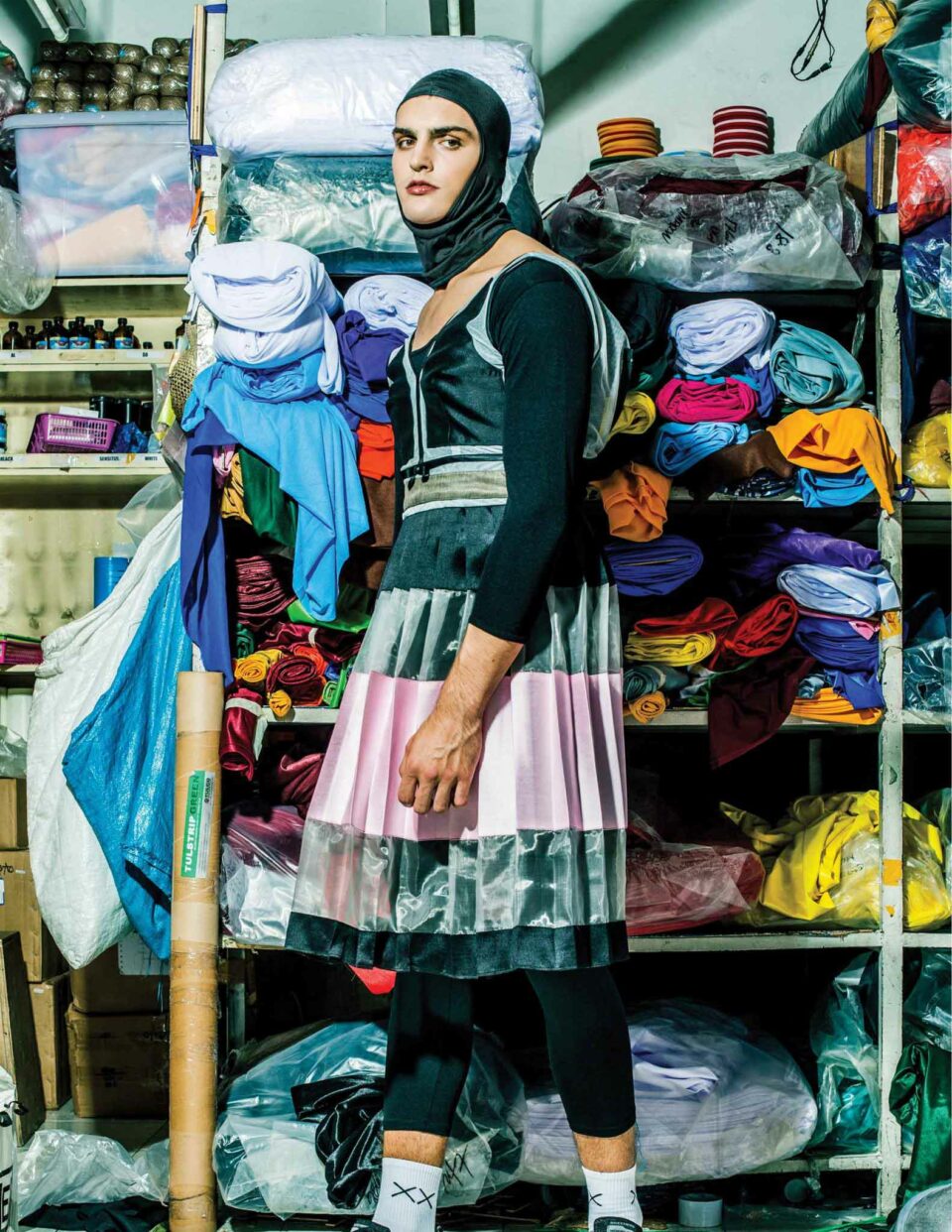
Skewing from the tried and tested path of menswear, Emir Yamamoto fashions a statement with pieces of sheer, bridal, and cocktail fabrics. This has always been the premise of how the designer works, coalescing two ends of a spectrum in a cohesive whole. Fusing an aesthetic that is confident in its ease and grace, there now exists an entirely new proposition for the future of fashion in a more sustainable and boundary-shattering trajectory.
Pleated sheer dress with bridal and cocktail fabric scraps by EMIR YAMAMOTO
JEFFREY ROGADOR
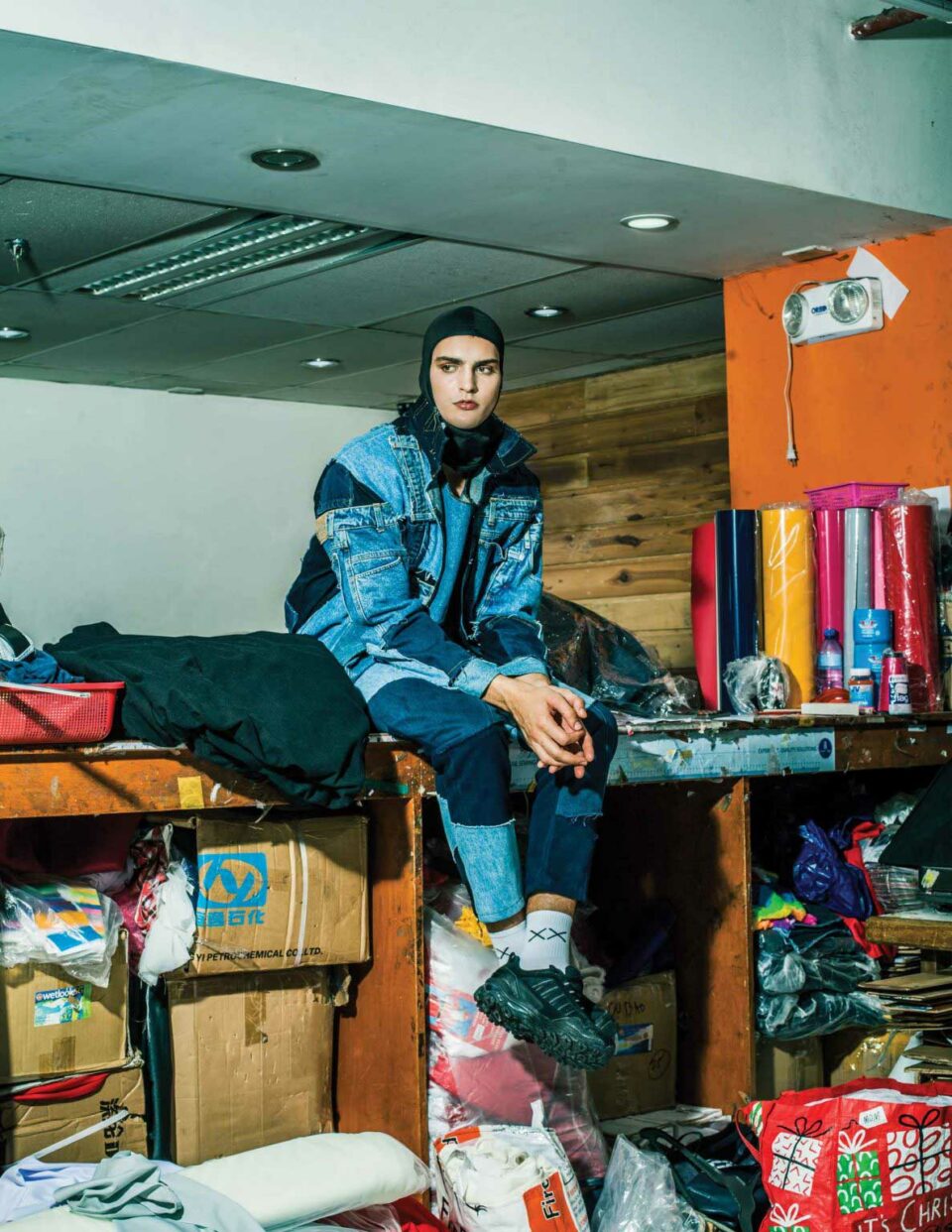
Realizing a responsibility far beyond the reaches of making fashion, Jeffrey Rogador has long asserted his subscription to sustainability through upcycling. “Designers, brands, and retailers should take action on the global issue of apparel waste and consumption. With every small step and contribution, we can help solve the problem,” he says. Never one to let fashion go to waste, he patched 50 pairs of old and unused jeans from Girbaud Philippines to create new and relevant pieces. “We designers should take the responsibility to lessen global fashion waste. If we try to make fashion more mindful and organic, it will be very helpful,” he concludes.
Patched denim jacket, patched denim top, and patched denim jeans all by JEFFREY ROGADOR
NERIC BELTRAN
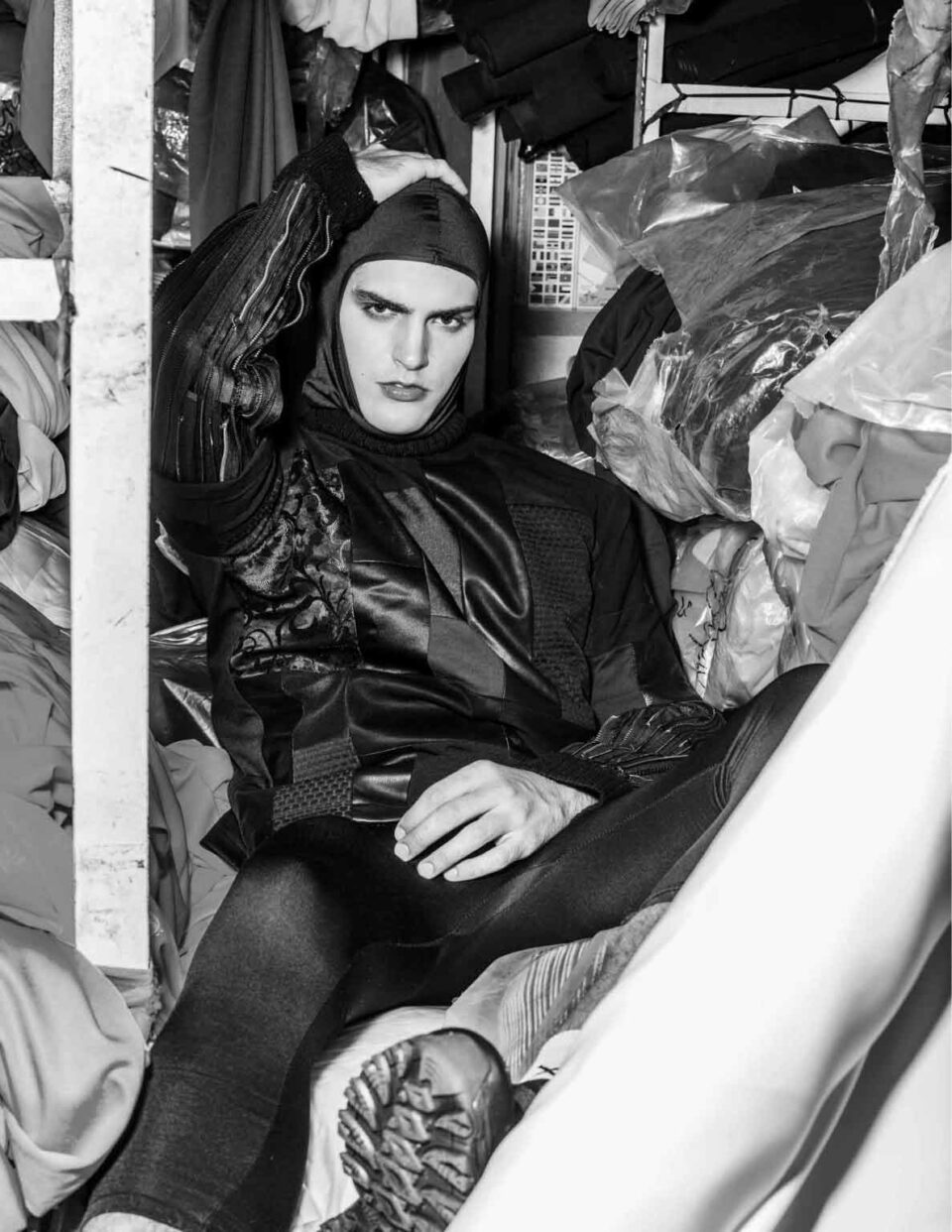
Sustainability is not just limited to fashion and reducing waste for Neric Beltran. With the people who work for and with him in mind, he really sees to it that his production is well taken care of, exercising utmost safety and fair pay for all. Ensuring that this means of livelihood carries over to their personal welfare, in this point-of-view, no efforts and hard work are wasted. Whether it’s piecing together scraps of excess fabrics and broken zippers, it is all about a coming together of vision, mission, and a distinct execution that are a product of his and his team’s rigor and attention to detail.
Black patched shirt and black pullover with zipper-detailed sleeves both by NERIC BELTRAN
